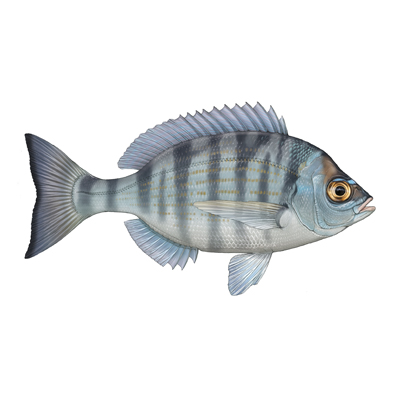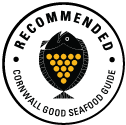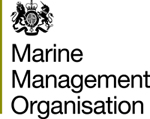

Black bream is a firm white fish, similar in taste and texture to bass. It has a distinctive flavor, though it’s not hugely popular in the UK despite the fact it's delicious! It is ideal for grilling, steaming, baking or pan-frying whole. It is only sporadically available on our markets however as only small quantities are landed to Cornish ports. Best choice is line caught Black seabream.
Black bream stocks currently appear to be healthy, however this stock is not well studied so more research is needed. Cornwall has no known black bream nursery areas however the species may benefit from bass nursery area byelaws and the recently introduced ban on netting within Cornish estuaries (CIFCA Jan 2018) Best choice is line caught black seabream.
In 2019 a total of 215kg of black seabream were landed to Cornish ports with a value of £1k (MMO data).
Updated March 2020

within Cornwall IFCA district 0-6nm
A low impact, selective method of fishing using hook and line.
Learn moreCornwall VIIe,f,g and h
Demersal trawls are large nets that are pulled through the water with the bottom edge of the net touching the seabed. At each edge the net is pulled open by metal ‘trawl doors’. Sometimes referred to as Otter trawling
Learn moreCornwall inshore 0-6 nautical miles
Gill nets are lightweight nets made of nylon (monofilament) fishing line that are anchored to the seabed and are used to catch fish by entangling the gills.
Learn moreCornwall Good Seafood Guide rates fish on sustainability using a scale of 1 to 5.
1, 2 and 3 are recommended, Fish to avoid are rated 5.
We use the system devised by the Marine Conservation Society (MCS) so our scores are comparable with the scores produced by MCS for the UK and fisheries from all around the world. For more information on scoring click here.
Black bream are social fish, sometimes forming large shoals. They have a lifespan of about 15 years, and can grow to a maximum size of 60 cm and maximum weight of 1.2 kg. They feed on seaweeds and small invertebrates, especially crustaceans. Black bream are found off south-west Britain, in the English Channel, and the Irish Sea. They live over seagrass beds, rocky reefs and sandy bays, and are typically found between 5 and 300 metres in depth. Black bream change sex during their lifetime; they all mature as females, then once they reach about 30 cm (at 2-3 years) they may change into males. All fish over 40 cm are males. Because of this, populations must have a balanced age structure in order to be reproductively successful. Black bream lay eggs in the sand, in a nest- a large deep depression in the sand, that the male excavates with its tail. Spawning occurs in April and May in UK inshore waters, so eating the fish during these months should be avoided. This breeding strategy means that if fish are targetted during breeding season and the males are removed fromn the nests before the eggs have hatched the eggs will die making the species vulneable to fishing.
Quantities of black bream landed to Cornish ports fluctuates but each year approximately half a tonne of black bream are landed to Cornish ports. Although stocks in the English Channel were heavily fished in the 1970’s and 1980’s they have recovered in recent years and appear to be in a healthy state. At present there is no formal stock assessment for black bream, and as the stock is not evaluated against precautionary limits the precise state of the stock is unknown. Black bream is moderately vulnerable to fishing pressures, due to slow growth rates and the fact that females change to males over the course of their lifetime. Fishing practices used to catch black bream selectively target larger individuals (males); this has the potential to affect the sex-ratio of the population and thus affect reproduction and repopulation. Despite this there is currently no evidence that the fishery is experiencing overfishing.
Cornwall, Sussex, and North Western Inshore Fisheries Conservation Authorities (IFCAs) all enforce local bylaws to prohibit landing of black bream below 23 cm. This effectively protects female bream and gives them a chance to spawn, meaning bream from these areas are amongst the most sustainable in the UK. However, the fact that males show significant investment in creating nests and guarding eggs emphasises the need for conserving an appropriate sex ratio within a population. As black bream change from female to male with age, a maximum landing size of 40 cm may also benefit the species, as it will allow protection for mature males as well as mature females. Other appropriate management measures required include detailed stock assessments and seasonal closures within spawning areas. To date no spawning areas have been documented in Cornish waters.
Black bream are especially vulnerable to bottom trawling, as this can destroy both nests and eggs, and disturb the spawning process. Trawling is also associated with discarding of unwanted fish, i.e. undersized and/or non-quota and/or over-quota species. A common and valuable bycatch when targeting black bream is bass. Black bream caught with rod and line or fixed gill net is a more sustainable option.






Cornwall Good Seafood Guide is underpinned by the Marine Conservation Society (MCS) Good Fish Guide. The first UK consumer guide to sustainable seafood. For more information visit www.fishonline.org
Cornwall Good Seafood Guide is here to help us all make sustainable seafood choices. Choices that will help us keep the oceans healthy and Cornish fishers' futures safe. This website is funded by Cornwall Wildlife Trust. If you would like to make a meaningful difference to the health of our oceans, please consider making a donation to the Cornwall Wildlife Trust Ocean Emergency fund. Your donation will help safeguard these remarkable environments, ensuring that they continue to thrive for generations to come. Together, we can be stewards of the seas and champions for a healthier, more sustainable future.